Sustainable battery electrode material derived from tea waste
 Scientists utilize discarded tea leaves for sustainable and affordable sodium-ion battery anodes to enable renewable energy storage.
Scientists utilize discarded tea leaves for sustainable and affordable sodium-ion battery anodes to enable renewable energy storage.

 Subscribe to our Nanotechnology Spotlight feed
Subscribe to our Nanotechnology Spotlight feed
 Scientists utilize discarded tea leaves for sustainable and affordable sodium-ion battery anodes to enable renewable energy storage.
Scientists utilize discarded tea leaves for sustainable and affordable sodium-ion battery anodes to enable renewable energy storage.
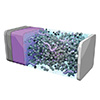 A new roadmap plots development trajectories for solid-state batteries as a safer, higher-energy successor to today's lithium-ion batteries. Hybrid solid electrolyte systems emerge as a promising strategy for advancing battery technology and optimizing energy storage solutions.
A new roadmap plots development trajectories for solid-state batteries as a safer, higher-energy successor to today's lithium-ion batteries. Hybrid solid electrolyte systems emerge as a promising strategy for advancing battery technology and optimizing energy storage solutions.
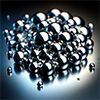 Researchers demonstrate a technique to harness electrochemical energy released when the oxide layer on liquid metals reforms after being ruptured. This approach enables new kinds of soft, stretchable batteries and self-powered devices.
Researchers demonstrate a technique to harness electrochemical energy released when the oxide layer on liquid metals reforms after being ruptured. This approach enables new kinds of soft, stretchable batteries and self-powered devices.
 Novel double membrane biobattery design inspired by mitochondria achieves high energy density and biocompatibility, enabling advanced implantable devices.
Novel double membrane biobattery design inspired by mitochondria achieves high energy density and biocompatibility, enabling advanced implantable devices.
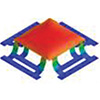 Researchers have created a new type of electricity generator that uses falling water droplets more efficiently, thanks to groundbreaking 4D printing techniques.
Researchers have created a new type of electricity generator that uses falling water droplets more efficiently, thanks to groundbreaking 4D printing techniques.
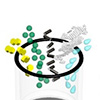 By adopting a single-enzyme approach, scientists have unlocked a new era in enzymatic biofuel cell technology, where one device serves a dual purpose: harvesting electricity and providing an analytical signal for glucose detection, all powered by a single enzyme, glucose oxidase, on both the anode and cathode.
By adopting a single-enzyme approach, scientists have unlocked a new era in enzymatic biofuel cell technology, where one device serves a dual purpose: harvesting electricity and providing an analytical signal for glucose detection, all powered by a single enzyme, glucose oxidase, on both the anode and cathode.
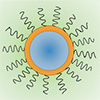 Researchers report single molecule studies of energy transfer using a quantum dot donor with an organic dye acceptor. They demonstrate that suppression of the blinking of the QD donor minimizes the loss of energy, which is achieved by a simple surface treatment method.
Researchers report single molecule studies of energy transfer using a quantum dot donor with an organic dye acceptor. They demonstrate that suppression of the blinking of the QD donor minimizes the loss of energy, which is achieved by a simple surface treatment method.
 Triboelectric nanogenerators (TENGs) are rapidly emerging as a cutting-edge technology with the potential to revolutionize the marine industry. As a novel technology that has made significant progress over the past decade, TENGs have been regarded as one of the most efficient methods for harvesting low-frequency ocean energy.
Triboelectric nanogenerators (TENGs) are rapidly emerging as a cutting-edge technology with the potential to revolutionize the marine industry. As a novel technology that has made significant progress over the past decade, TENGs have been regarded as one of the most efficient methods for harvesting low-frequency ocean energy.